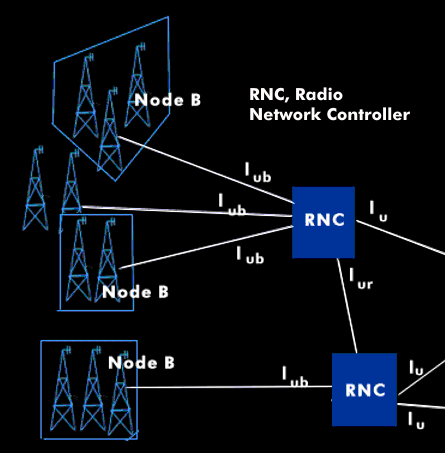UMTS terrestrial radio access network (UTRAN)
UTRAN(UMTS Terrestrial Radio Access Network) is the radio technical part of a UMTS network in which the radio interface is also provided. UTRAN is a component in the mobile access network and consists of a radio node, the NodeB, and the Radio Network Controller( RNC). The UTRAN is used to establish the connection to the exchanges or the Internet.
The Node B in UMTS corresponds to the radio base station in GSM networks; it can manage several radio cells and finds its equivalent in GSM networks in the Base Transceiver Station( BTS). The Radio Network Controller (RNC) corresponds to the Base Station Controller( BSC) in the GSM standard. Several Node Bs are connected to a Radio Network Controller (RNC), which communicate with each other and with the NodeBs via Iu interfaces. Between NodeB and the radio network controller it is the Iub interface and between the radio network controllers it is the Iur interfaces. The UTRAN is thus able to perform handovers independently. So that subscribers can switch from one radio cell to another radio cell area by means of roaming.
In theSystem Architecture Evolution( SAE), the core structure of LTE networks, the access network is called Evolved UTRAN( E-UTRAN).

